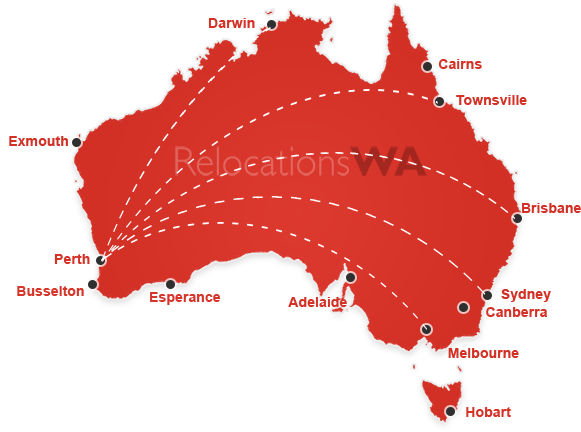
How to Pack for Your Interstate Move: 25 Practical Tips
Moving interstate is a monumental task, particularly the part where you have to pull your belongings from all the rooms and pack them neatly for transit. It’s tedious just thinking about it. An interstate move can be quite daunting, considering the laborious job of changing your address and everything that needs to be organised. And then there are the interstate removalist costs you need to think about as well. But it’s a good thing you have this list of tips on how to pack for a move to help you out:
1. What to start packing first when moving
First things first, decide where to start when packing to move. Begin with the items you rarely use and those you won’t be needing before the moving day.
When you’re diving into packing for a move, it’s a smart move to start with stuff you won’t be using in the weeks leading up to the big day. Those everyday must-haves? They’re the last things to box up—your go-to coffee mug, comfy PJs, and favourite snacks.
Oh, and when it comes to tips for moving interstate, don’t overlook the importance of a moving day box! It’s your lifesaver for that first day in your new place. Toss in your trusty kettle (because of priorities), your go-to book for winding down, and any important papers you might need pronto. It’s all about having the stuff you’ll crave when you step into your new digs.
2. Find the best cardboard boxes for moving
You’ll need lots of boxes to pack away all your belongings. Shop locally or online for the best packing boxes for moving house. Consider the build quality, size, and weight rating when shopping for the best packing boxes.
Nail down the right size of those boxes. You don’t want your stuff squished or bouncing around in there. Next up, make sure those boxes are tough cookies, sturdy enough to handle your things without collapsing like a house of cards.
Here’s the genius part: mix it up with different box sizes. Little guys for your smaller bits and hefty boxes for those bigger items. And here’s a pro tip to have the best way to pack when moving: think about your truck size. Double-check that the boxes will snugly fit into that cargo space like a puzzle piece. Lastly, don’t skip the labelling game! Knowing what’s inside and where it’s supposed to go will save you a world of unpacking headaches.
3. Choosing the best size boxes for moving
Home shifting boxes come in a variety of sizes. But bigger is not always better; determine the best size boxes for moving and packing different items based on their dimensions.
Do you need moving interstate tips? Those moving boxes are the unsung heroes of a smooth transition. Picture this: having these trusty boxes in similar sizes makes the whole packing and stacking gig a breeze. Less hassle, less chaos—right? Plus, implementing the right box for each item? It’s like giving your stuff a cozy, safe ride to their new home, lessening the risk of bumps and bruises.
Mixing in other sizes and specialty boxes is like the secret sauce for a seamless move. So, get ahead of the game—sort out your stuff and snag some sturdy, clean boxes before the big moving day.
4. How to pack boxes when moving house
Once you’ve got all the right size boxes, it’s only a question of how to pack boxes when moving house. Ensure you have the heavier items at the bottom of the box and the lighter ones near the top.
Let’s talk packing hacks! It’s not just about picking the right box size; it’s a bit of an art form. Here’s the deal: heavy stuff goes down low. Think of it like building a solid base for a skyscraper—sturdy and supportive. That way, your delicate goodies won’t feel like they’re in a wrestling match.
And here’s the magic touch: lighter items? They’re the VIPs on the top floor! Keeping them up there means less squishing and easier lifting when moving boxes interstate. It’s all about balance and protecting your stuff from getting squashed in the move.
5. How to wrap and move boxes
Wrap and move boxes to a designated spot after filling them up. Use bubble wrap or cling film to wrap each box. Doing so keeps the box intact and cushions it from impact during transit.
Think of these boxes like precious cargo (because they are!)—bubble wrap or cling film can be your besties here. Wrap them up like little presents; it’s like giving them an extra shield against bumps and knocks on the road. These steps? They’re your insurance policy for your belongings, ensuring they arrive at your new place safely and sound, just as you packed them.
6. Packing tips for large items when moving
Deciding what to pack in large moving boxes interstate can be a bit of a challenge. Fill the big ones with large lightweight items such as blankets and plastic utensils. The big boxes are like the canvas for your moving masterpiece! Here’s the deal: those big guys are perfect for light, fluffy stuff. They’re not just taking up space; they’re like bodyguards, shielding your other items in transit.
Now, smaller boxes? They’re the heavy lifters. Use the smaller boxes for heavier items such as books, tools, and electronics. Stuff them with your weightier goods. This way, you’re not playing weightlifting champ on a moving day and keeping your items safe from getting squished.
It’s all about the dance of weight and space! Spread the load wisely, making your move much smoother and safer. Trust me, it’s like a moving magic trick!
7. Moving without boxes
Running low on those standard packing boxes? No worries. It’s time to get crafty with what you’ve got! Suitcases? They’re not just for jet-setting adventures—perfect for hauling clothes or bulky stuff with their sturdy build and handles.
If you don’t have any packing boxes for moving, you can use suitcases, garbage bags, backpacks, baskets, or large tote bags instead. Surprisingly handy for softer bits like clothes or light items that don’t need a rigid box. They’re your moving superheroes for smaller bits or stuff you need quick access to.
Here’s a moving interstate tip—getting creative with what you’ve already got solves the box shortage and turns your move into a clever, efficient adventure. It’s all about using what you’ve got to make that move a smooth sail!
8. Don’t overpack
House-shifting cartons have a weight limit; exceeding that limit may cause them to tear or come undone when lifting or pushing. Don’t fill any box with more than it can carry.
Don’t go overboard! Those boxes have a limit, and pushing it can lead to a real box-office disaster.
To keep your stuff safe and your move smooth sailing, it’s all about balance. Pop the heavier things down low and fill the rest with the lighter bits. That way, your boxes won’t buckle under the weight, and your belongings will reach your new spot without unexpected box malfunctions. It’s like giving your boxes a crash course in weightlifting etiquette!
9. Take pictures of electronics
Take a few snapshots of appliance connections such as TVs, audio systems, and computers before taking them apart so you can refer to the photos when reconnecting them.
These snapshots are like your personal guidebook when setting up shop in your new spot. They’re your cheat codes to reassemble everything just the way it was; no guesswork is needed. Trust me, when you’re staring at a pile of cables, these pics will save the day—making reconnection a breeze without any head-scratching moments. It’s like having your DIY visual manual for getting your electronics back in action pronto!
10. Colour code all the boxes
Use coloured markers to colour code and mark boxes containing similar or related items. For instance, use a specific colour for boxes holding items from a particular room.
There’s no other best way to pack for moving than this. It’s like creating your secret map! When you’re at your new spot, matching the colours to the rooms is a no-brainer. It’s like a puzzle where all the pieces just click into place. That way, unpacking becomes a breeze—no more box roulette or wandering around trying to figure out where stuff goes. Colour-coding is like your moving fairy godmother, making your new space feel like home in no time!
11. Take pictures of the box contents
Take pictures of each box and its contents to make it easier to locate all your belongings when unpacking at the new house.
Grab your camera and take shots of each box—outside and inside—before sealing them up tight.
They’re like your digital map, showing exactly what’s inside each box. No more treasure hunting through a stack of containers! When it’s time to unpack, just swipe through these photos like a pro, and voila! You’ll find what you need without diving into a box abyss. It’s like having your unpacking cheat sheet—making settling into your new spot much easier and quicker.
12. Wrap delicate items in old newspaper
Packing boxes for moving have no internal or external cushioning. Wrap delicate and fragile items such as ceramic plates, glasses, and photo frames in layers of old newspaper or bubble wrap before placing them in boxes.
When it’s time to pack those delicate goodies for the big move, it’s all about giving them the VIP treatment! Your standard moving boxes might lack cushiony vibes but fear not. We’ve got a plan.
And here’s the pro move as a tip on moving interstate: cushion the box bottom with more packing material before nestling these wrapped treasures inside. Oh, and don’t forget to fill any gaps with extra padding to keep things snug as a bug.
With this TLC, your fragile items will make it to your new digs in tip-top shape, ready to bring that cosy touch to your new place. It’s like giving your beloved stuff a first-class ticket to their new home!
13. Tighten lids and bottle caps
Tighten lids on jars and caps on bottles to avoid spillage or misplacing the lids themselves. Use adhesive tape, rubber bands, or cling film to secure any lids and bottle tops that won’t fit properly.
When it’s time to pack up those jars and bottles for the big move, let’s seal the deal to avoid any surprise spills!
These little tricks are like your insurance policy for a spill-free move. No mess, no stress—just your stuff arriving safe and sound at your new pad, keeping everything clean and dry along the way!
14. Put your towels and sheets to good use
Want to ace your packing game and save some precious space? Here’s a nifty trick: those towels, sheets, and linens lounging around can do more than just cosy up your bed—they’re your secret packing superheroes!
Instead of having towels, sheets, and linens take up space in packing boxes, wrap them around delicate items for extra damage protection.
It’s a win-win: your linens get a new role, and your fragile items get extra TLC during the move. Smart, efficient, and your delicate stuff arrives at your new spot without a scratch!
15. Fill up pots and containers with small items
Want to level up your packing game and save some serious space? If you don’t want to move boxes interstate, here’s a slick move: think inside the box—literally!
Put small items such as spoons and spice jars into pots and other large containers to save space in the cardboard moving boxes.
Those big pots or sizeable containers you’ve got hanging around? They’re like secret hideouts for your small bits and bobs—spoons, spice jars, you name it. Pop those tiny treasures inside; suddenly, you’re a space-saving wizard! Not only are you making the most of those bigger items, but you’re also keeping things organised and snug for the move.
Here’s the magic: fewer boxes are needed for those small items, and when you reach your new spot, these guys are already chilling in their containers, ready to be unpacked and find their new homes. It’s like a packing hack that’s both smart and time-saving!
16. Don’t empty your drawers
When it’s time to move desks or tables with drawers, here’s a neat trick: instead of emptying those drawers, let’s keep things snug and secure!
Pull out any drawers that won’t lock in their desks or tables, but don’t empty them. Instead, wrap the drawers with cling film and pack them with their contents intact. When unpacking, you can simply slide them back into their respective compartments.
Now, the magic happens when you reach your new spot. You can slide those wrapped drawers back into place without fussing around with loose items. It’s like a move-in shortcut—unpacking becomes a breeze, and your new space gets instantly organised. Smart, efficient, and no missing odds and ends—win-win!
17. Get rid of what you don’t need
Moving house is a good time to declutter your household. Don’t pack anything that will only take up your time and packing space. Donate, sell, or give away all the items you don’t need before moving to a new house.
Moving boxes interstate? It’s like a golden chance to clear out the stuff hanging around that doesn’t spark joy anymore. Dive into your stuff and figure out what’s a keeper, what’s worth selling, what could do some good with a donation, and what’s just gotta go. The less you lug around, the smoother and cheaper this move interstate will be. It’s a win-win: decluttering and making your move a breeze!
When you’re selective about what comes along for the ride, you’re setting the stage for a fresh start in your new spot. It’s like starting a new chapter with a clean slate, feeling organised, refreshed, and ready for all the adventures ahead. Cheers to embracing the new and letting go of the old!
18. Create a to-do list
Feeling like packing’s becoming a whirlwind? We’ve got just the trick to keep things on track when you transport boxes interstate!
It’s easy to lose track of work when dealing with so many boxes and items. Organise your packing process by creating a moving checklist or a to-do list. Cross off one entry at a time; otherwise, you might get overwhelmed.
As you tick off those completed tasks, it’s like a mini victory dance! It feels great to see progress, but it keeps you focused and stops that “I’ve got a million things to do” feeling.
This checklist isn’t just a list; it’s your secret weapon against chaos. It’s all about organising things and making your packing journey smoother, one checked-off task at a time!
19. Pack one room at a time
Divide and conquer is the best packing strategy. Take one room at a time, and remember to label all the boxes from each room clearly. Going from room to room keeps the whole process neat and organised.
Think of it as a room-by-room mission. Start with one space, pack it up nicely and neatly, then move on to the next. It’s like tackling your move in bite-sized chunks.
And here’s the genius part: label those boxes like a pro! Make sure each one screams out where it belongs. This labelling game isn’t just for show—it’s your map for packing and unpacking. When you reach your new spot, directing those boxes to their rightful rooms becomes a piece of cake!
20. Get lots of garbage bags
Hey, when you’ve got those odd-sized items giving you a hard time during packing, here’s a sneaky solution: garbage bags to the rescue!
Even with tons of moving boxes, you’ll probably realise that not everything can fit in them. So, get enough garbage bags to pack oversized and oddly shaped items such as pillows, rugs, soft toys, and heavy fabrics. Besides garbage bags and boxes, you can also use packing cases for moving houses.
21. Take care of knives and other sharp objects
When packing those sharp tools and knives for the big move, safety’s the name of the game!
Sharp tools and cutlery need extra care when packing to prevent accidents and damage. Wrap their blades and pointy bits with old newspaper or wrapping paper before packing them in boxes.
When you tuck these wrapped items into their special boxes, think strategically! Make sure they’re snug and secure. No wiggling around during the move.
These careful steps aren’t just about preventing accidents; they’re like a safety net for your tools and cutlery. When they reach your new spot, they’ll be waiting for action, all safe and ready to tackle the next DIY project or dinner prep!
22. Make an easy meal the night before
Imagine this: You’ve got a packed day ahead for all that packing hustle, right? Here’s a tip to prep for that hectic day the night before!
If you’ve dedicated a single day for packing, make sure to have an easy meal the night before, preferably take-out food so you won’t have any dirty utensils or leftovers. But you can always put leftovers in sealable food containers if you have any.
Say goodbye to dishes and cooking—I’m talking easy-peasy take-out for dinner. That means no kitchen mess to deal with afterward, saving you time and energy for the big packing marathon!
And here’s the leftover magic trick: pop those extra bites into sealable food containers. They’ll keep everything fresh and handy for quick bites while you’re in full packing mode the next day.
This meal prep game plan isn’t just about food; it’s your secret weapon for a focused and productive packing day. No fuss, no cleanup hassle—just you, your boxes, and a stress-free day of packing!
23. Keep a tote bag full of moving essentials
Ensure to keep all your moving essentials in a small bag such as a tote or backpack. These may include toiletries, medicine, a flashlight, any required paperwork, keys, a phone charger, etc. Keep the essentials bag close by to avoid misplacing it in the packing frenzy.
Keep this bag close, like your moving sidekick! Whether carrying it with you or placing it in a particular spot away from the packing chaos, having it nearby means easy access to all your must-haves.
This bag isn’t just any bag; it’s like your moving-day superhero kit. No more frantic searches through packed boxes for your essentials. They’re right there, within arm’s reach, keeping you sorted and stress-free throughout your entire move!
24. Relocate hazardous goods separately or dispose of them before the move
Hazardous goods such as paint, chemicals, and flammable liquids cannot be relocated along with your normal household goods, therefore it’s important to make the necessary arrangements in advance. If you want to keep those goods, you might need to organize a specialist transport service, otherwise, it’s advisable to arrange for appropriate disposal.
Ensure the seals and lids are securely tightened on these so that the liquids don’t spill or leak out during the moving process.
25. Don’t rush
Packing can seem like a daunting task at first when you think about all the stuff you have to carefully put away in boxes. It’s normal to feel overwhelmed and try to rush things, but that only makes the job harder. Pack at your own pace – take breaks and seek assistance from friends or even professional movers if necessary. In short, don’t overburden yourself. Follow these 25 moving house packing tips to prepare for an easy move. These also apply when packing up a house when using removals and storage solutions. Remember, the most important thing is to draft a packing plan from the very start. Work out how many packing boxes are needed, create a well-organised inventory and labelling scheme, and stick to a convenient working schedule. By carefully planning, you’ll realise the most efficient ways to pack for moving.
Moving house?

You might also like
Choosing Between DIY Truck Hire for an Interstate Move vs Hiring a Removalist
Moving can be exciting yet stressful. However, relocating interstate is a totally different beast – especially when it comes to moves across Australia. An interstate move requires careful planning, organisation, and decision making.…
Truck Sizes in Australia: Your Essential Guide for Moving
A house move can be both exciting and overwhelming, especially when it comes to choosing the right removalist truck size for your move in Australia. After all, knowing truck sizes is important regardless…
Car and Driver’s Licence Requirements When Moving Interstate
When you decide to keep your vehicle after moving across state lines in Australia, ensuring your driving licence and vehicle registration information is up-to-date is a fundamental aspect of staying compliant with the…








